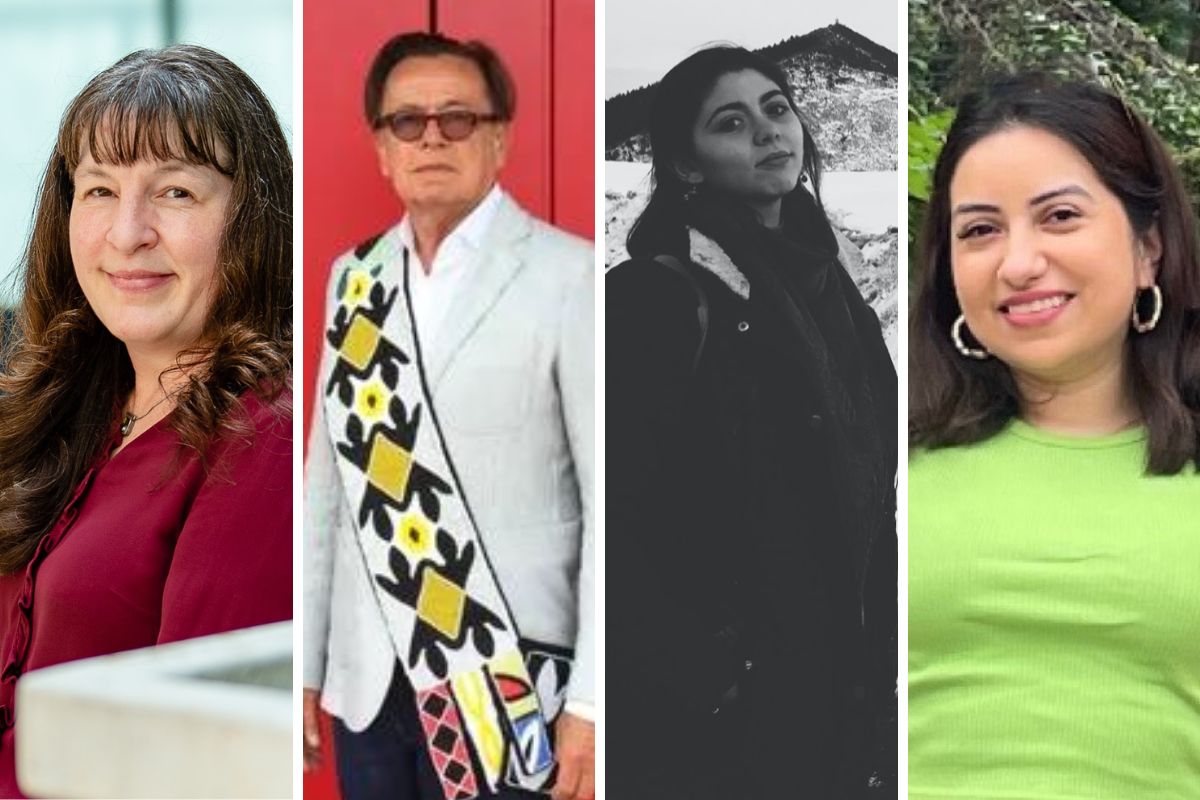If you look closely enough at the details of New York City, you’ll uncover the often neglected history of the Lenape people amid the towering skyscrapers. Pearl Street was where the Lenape discarded oyster shells and pearls after fishing. The avenue now known as Broadway originally began as a trading route for numerous Indigenous tribes. And for Lenape people, Wall Street itself is a remnant of the violence and displacement they faced at the hands of Dutch settlers in the 17th century.
This is precisely what playwright Mary Kathryn Nagle explores in her tour-de-force show Manahatta, a thought-provoking examination of Lenape erasure, assimilation and the cost of capitalism. And now, thanks to curriculum developed in partnership with the Lenape Center, TC’s Rachel Talbert and masters and doctoral students in New York City and beyond can engage in culturally relevant curricula that explores the experiences of the Lenape people throughout history and today through materials like Manahatta and other works that abandon traditional “settler narratives.”

Map of Lenapehoking (the land of the Lenape) and approximate boundaries of languages spoken. (Map: Wikimedia Commons)
For Talbert — a lecturer in TC’s Early Childhood Education program who has spent decades working with Indigenous youth — giving educators these tools is essential to a foundational purpose for education: preparing students for civic engagement.
“Every student in every class is going to become a voter one day and they’re going to make decisions. And to do that without learning about Native peoples as present and only historic, that’s really problematic,” says Talbert, noting the numerous contemporary issues related to Indigenous rights. One is the Lenape’s ongoing struggle to have a permanent center in Inwood Hill Park, where remnants of Lenape life remain in addition to a marker recounting historical inaccuracies about the “purchase” of Manhattan. Talbert, with a team of three TC students, has documented the proliferation of these markers and inaccuracies throughout the island, sees the struggle for a physical Lenape Center as a reflection of a key truth: “If we don't teach these histories and understand current issues, we miss out on really important pieces of democracy.”

Rachel Talbert, lecturer in TC’s Early Childhood Education program; Joe Baker, Executive Director of the Lenape Center; TC alum Gabriella Grinwald-Alves (M.A. ’23); and second-year TC doctoral student Carolina Gomez. (Photos courtesy of individuals pictured)
The curricula on the Lenape, offered across four different installments for students in pre-kindergarten through 12th grade, reflects the belief of Talbert and Lenape Center Executive Director Joe Baker that students should continuously learn about the “challenging history” of the Lenape because of “how young colonial thinking begins,” Baker said at the post-show panel discussion with Talbert and her co-authors at the Public Theater on Nov. 29.
Currently, New York State standards include little specific instruction on the Lenape in fourth grade curriculum. Additional limitations include little time to teach social studies in elementary school more broadly, “much less about the Lenape,” teachers’ lack of content knowledge, and teacher concern that there are not age appropriate ways to present material that limits instruction altogether.
For curriculum co-author and doctoral student Carolina Gomez, the open-source project is meant to be a “starting place, not an ending point, that should spark curiosity” so educators and students can learn more. “It aims to acknowledge genocide without falling into victimhood.”
Exploring such complexities from pre-K through 12th grade required Talbert and her team to incorporate child development considerations into each level of the curriculum as well, with the youngest of students benefiting from story-based learning.
“Having stories central to the curriculum can make it easier and help you unsettle your own thinking,” explained TC alum Gabriella Grinwald-Alves (M.A. ’23) another co-author, at the recent panel discussion, noting that the insight of Lenape elder Curtis Zunigha influenced a key shift: “We can’t immediately decolonize. We must first Indigenize.”
The Lenape curriculum is available for free below and each lesson can be taught within an hour, a goal set when Joe and Rachel first discussed the project so that educators can easily incorporate it into their schedules, and don’t feel overwhelmed.
The Lenape Center, Talbert and her team of eight former students are already hard at work on next steps, including researching the efficacy and challenges of the curriculum through focus groups; attending conferences to present (seven to date this year alone); continuing to expand the curricula; and hosting additional workshops to help educators further incorporate Indigenous topics into their teaching.
In this collaborative journey, the work is far from over, Talbert says: “We’re making up for lost time.”

